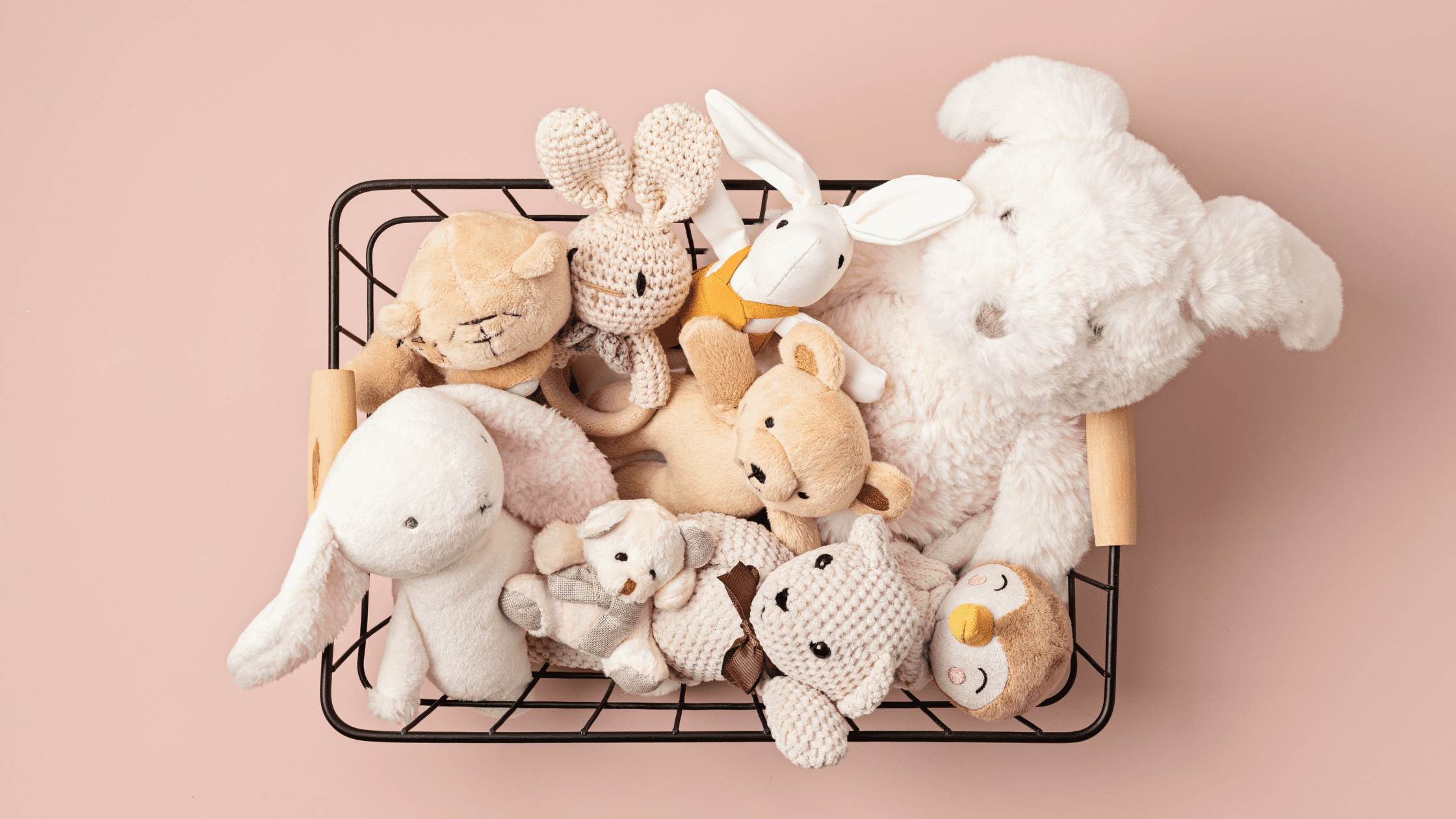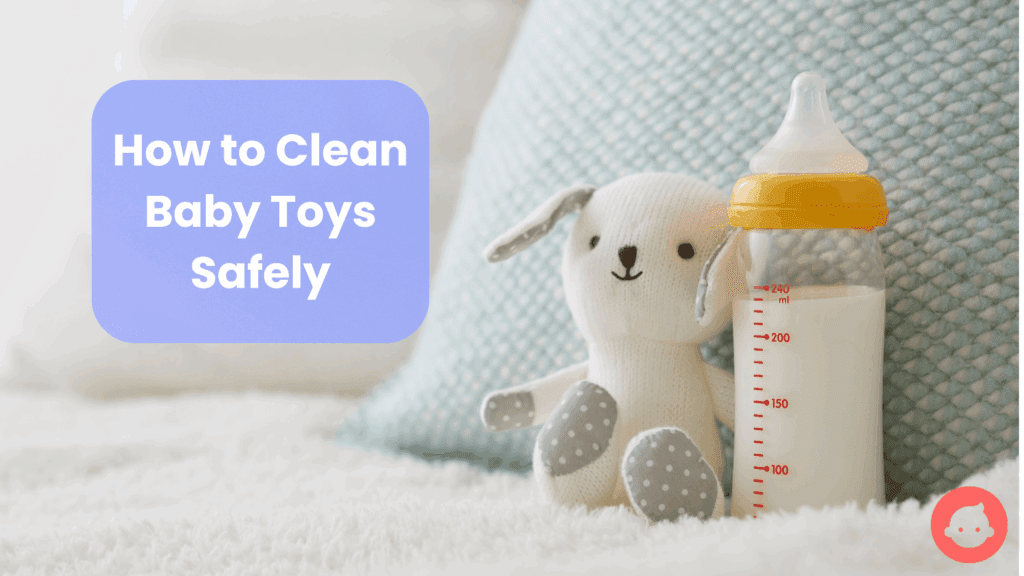Here’s the dirty truth no one likes to talk about: your baby’s toys are probably filthy. And not just a little sticky. We’re talking about full-blown germ factories.
That’s why it’s so important to clean baby toys safely, the right way. Not with harsh chemicals. Not with guesswork. Just simple, safe methods that work.
So if you’ve ever wondered how to clean baby toys without losing your mind, this is for you. It’s easier than you think—and totally worth it.
Read More: Affordable Baby Tech Rentals for New Parents [Coupon Inside!]
Why Cleaning Baby Toys Matters

Babies chew, lick, and love their toys. That’s cute, but also a fast way to spread bacteria, viruses, and mold. Dirty toys can contribute to frequent colds, rashes, and even tummy issues.
A good cleaning habit not only protects your baby but also keeps your toys lasting longer.
How Often Should You Clean Baby Toys?
Here’s a quick guide:
| Toy Type | Cleaning Frequency |
| Teethers/Rattles | After each use or drop on the floor |
| Plush/Fabric Toys | Weekly or when visibly dirty |
| Hard Plastic Toys | Weekly or when sticky |
| Bath Toys | After each bath and deep clean weekly |
| Shared Toys | After each playdate or illness |
How to Clean Baby Toys by Type
Here’s how you should clean baby toys.
1. Hard Plastic and Silicone Toys
These are the easiest to clean.
Steps:
- Wash in warm, soapy water using a soft cloth or brush.
- Rinse thoroughly with clean water.
- Air-dry completely before giving them back to your child.
Dishwasher Tip:
Many hard plastic toys are top-rack dishwasher safe. Just check the label.
2. Plush and Fabric Toys
These can trap dust, saliva, and bacteria.
Machine-Washable Toys:
- Use a gentle cycle with baby-safe detergent.
- Place the toy in a mesh laundry bag to protect it.
- Let it air-dry or tumble-dry on low heat.
Surface-Clean Only Toys:
- Wipe with a damp cloth and mild soap.
- Rinse with a clean damp cloth.
- Air-dry completely.
3. Wooden Toys
Wood can absorb moisture, so never soak it.
Steps:
- Mix equal parts white vinegar and water.
- Wipe the toy with a damp cloth dipped in the solution.
- For sticky spots, use a small amount of baking soda.
- Dry immediately with a clean towel to avoid warping or splinters.
4. Electronic and Battery-Operated Toys
These require special care.
Steps:
- Remove the batteries before cleaning.
- Wipe the surface with a cloth dampened with water and mild soap.
- Use a clean cloth to remove any soap residue.
- Finish with a disinfecting wipe if needed.
- Let the toy dry completely before putting the batteries back in.
5. Bath Toys
Mold loves warm, wet places. These need extra attention.
After Each Bath:
- Squeeze out any water.
- Rinse under clean water.
- Let them dry completely.
Weekly Deep Clean:
- Soak in a solution of 1 part white vinegar to 1 part warm water for 10–15 minutes.
- Scrub if needed, rinse, and air-dry.
You Might Like: Baby Gear Vacation Rental: Hacks Every Traveling Parent Needs
When and How to Disinfect Baby Toys
Disinfection is important after illnesses or shared play. Here are safe options:
Option 1: Bleach Solution (for non-porous plastic toys)
- Mix 1 tablespoon of bleach in 1 gallon of water.
- Soak the toy for 2–5 minutes.
- Rinse thoroughly with clean water.
- Let it air-dry.
Option 2: Hydrogen Peroxide Spray
- Spray 3% hydrogen peroxide directly on the toy.
- Let it sit for 5 minutes.
- Wipe and let it dry.
Option 3: Steam or Boiling (for silicone or boil-safe toys)
- Boil in water for 3–5 minutes or use a baby bottle sterilizer.
- Let it cool and dry fully.
What to Avoid
- Do not use harsh cleaners like ammonia or undiluted bleach.
- Avoid submerging battery-powered toys.
- Never put plush toys in hot water unless the tag says it’s safe.
- Always rinse off soap or disinfectant thoroughly.
- Do not put away toys that are still damp.
Pro Tips for Busy Parents
- Rotate toys to reduce clutter and cleaning time.
- Wipe toys right after messy play to prevent buildup.
- Use labeled bins for clean vs. used toys.
- Schedule a “toy wash day” once a week to stay consistent.
- Check for damage or mold often and toss out anything questionable.
Check Out: How to Score Same-Day SNOO Rental in Los Angeles
Final Thoughts
Learning how to clean baby toys doesn’t have to be complicated. With a few simple steps and the right tools, you can keep your baby’s play area healthy, safe, and sparkling clean.
At RentBabyTech.com, we’re committed to helping you create a clean and worry-free space for your little one. We rent baby gear that’s sanitized, certified, and ready to use—so that’s one less thing on your to-do list.
Frequently Asked Questions (FAQs)
1. Can I use baby wipes to clean toys?
Yes, but only for quick surface cleaning. Use alcohol-free, fragrance-free wipes and follow with a rinse if needed.
2. How do I know if a toy is dishwasher safe?
Check the manufacturer’s label or website. Most hard plastic toys without batteries are top-rack dishwasher safe.
3. Are essential oils safe for cleaning baby toys?
No, most essential oils are not safe for babies and may leave residue or cause skin reactions.
4. Can UV light sanitize baby toys?
Yes, UV sanitizers kill germs without chemicals. They’re best for small plastic items, not for plush or wooden toys.
5. What’s the safest disinfectant for baby toys?
Use diluted bleach (1 tbsp per gallon) or 3% hydrogen peroxide. Both are effective and safe when rinsed thoroughly.
6. How can I prevent mold inside bath toys?
Always squeeze out water after each bath, and store toys upright in a dry, open-air container.

